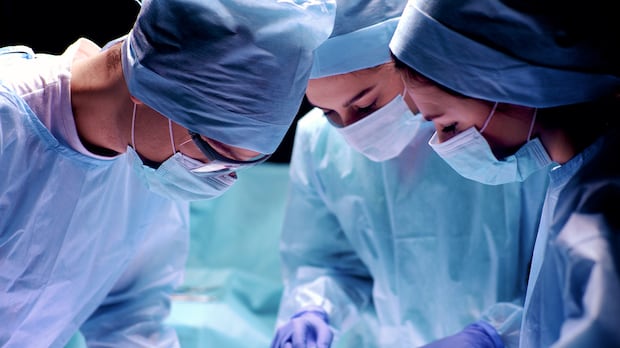Education
Anatomy Students Seek Alternatives After Dalhousie Bans Cadaver Use

Dalhousie University in Halifax has announced a temporary suspension of cadaver use for its anatomy program due to high levels of formaldehyde in the Tupper Building’s laboratory. The decision has prompted anatomy professors across North America to urge students to seek alternative hands-on experiences in the field.
After air quality tests revealed formaldehyde levels exceeding acceptable standards in Nova Scotia, the university has opted to utilize videos, skeletal materials, and anatomical models for teaching purposes this year. This shift raises questions among educators about the long-term implications for students’ education in anatomy.
Concerns Over Education Quality
Jessica Byram, an associate professor of anatomy at the Indiana University School of Medicine, shared her insights on the impact of cadaver work on students. Byram, who credits her profound experience with her first donor body as a pivotal moment in her career, believes that working with cadavers is crucial for understanding the human condition. “We always call our donors our student’s first patient,” she said. “The emotional experience of seeing the effects of smoking on the lungs, for example, cannot be replicated through models or videos.”
While some educators argue that alternative methods can provide adequate education, Byram strongly disagrees. She emphasized that the real-life dissection process adds a layer of respect and humanity to medical training that cannot be matched by technology alone. “Being in a lab with a variety of donors helps students appreciate the complexity and variations found in human anatomy,” she added.
Derek Harmon, an advocate for technology in education, teaches anatomy at Ohio State University using 3D printing and virtual reality. He acknowledges the benefits of technology but maintains that nothing can replace the experience of working directly with a donor. “Imagine if you had a mechanic that was learning to take apart a car and put it back together. Would you want them to learn that just through a computer interface?” he asked.
Industry Challenges and Future Solutions
The issue of formaldehyde exposure is becoming increasingly critical in the anatomy education sector. While the chemical is essential for preserving cadavers, it is also a known carcinogen. Byram noted that progress is being made towards developing new preservation formulas that minimize the use of formaldehyde, but the process is slow. “You don’t want to test new formulas on a donor body, especially given the ongoing supply and demand challenges,” she explained.
Dalhousie University has stated that it is exploring new methods for body preservation and is considering renovations for the anatomy lab. Despite attempts to improve the ventilation system, air quality tests have consistently failed to meet regulatory standards. In a letter to students, the university confirmed it will continue to accept donations to its human body program while searching for long-term solutions.
Harmon emphasized the importance of balancing technology with hands-on experience in the classroom. He believes that the cadaver experience is a rite of passage for medical students, one that they are currently missing out on. “Updated ventilation systems can be costly but are a worthwhile investment in the future of medical education,” he concluded.
As Dalhousie University navigates these challenges, the broader conversation around cadaver use in medical education continues to evolve, underscoring the importance of hands-on training in developing competent and compassionate healthcare professionals.
-

 Politics4 weeks ago
Politics4 weeks agoSecwepemc First Nation Seeks Aboriginal Title Over Kamloops Area
-

 World5 months ago
World5 months agoScientists Unearth Ancient Antarctic Ice to Unlock Climate Secrets
-

 Entertainment5 months ago
Entertainment5 months agoTrump and McCormick to Announce $70 Billion Energy Investments
-

 Science5 months ago
Science5 months agoFour Astronauts Return to Earth After International Space Station Mission
-

 Lifestyle5 months ago
Lifestyle5 months agoTransLink Launches Food Truck Program to Boost Revenue in Vancouver
-

 Technology3 months ago
Technology3 months agoApple Notes Enhances Functionality with Markdown Support in macOS 26
-

 Lifestyle3 months ago
Lifestyle3 months agoManitoba’s Burger Champion Shines Again Amid Dining Innovations
-

 Top Stories2 months ago
Top Stories2 months agoUrgent Update: Fatal Crash on Highway 99 Claims Life of Pitt Meadows Man
-

 Politics4 months ago
Politics4 months agoUkrainian Tennis Star Elina Svitolina Faces Death Threats Online
-

 Sports5 months ago
Sports5 months agoSearch Underway for Missing Hunter Amid Hokkaido Bear Emergency
-

 Politics5 months ago
Politics5 months agoCarney Engages First Nations Leaders at Development Law Summit
-

 Technology5 months ago
Technology5 months agoFrosthaven Launches Early Access on July 31, 2025




















